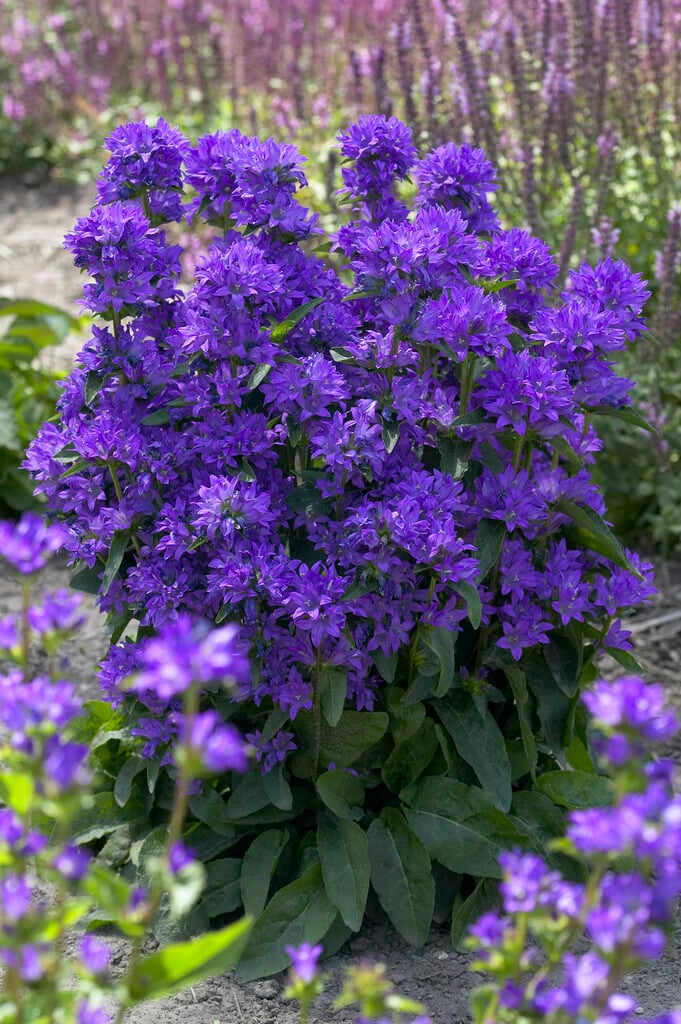Campanula glomerata 'Freya'PBR

clustered bellflower 'Freya'
A compact, vigorous rhizomatous perennial, forming clumps of upright stems to 40cm high, with dark green, ovate to lance-shaped leaves. Produces dense clusters of violet blue, bell shaped flowers throughout the summer
Size
Ultimate height
0.1–0.5 metresTime to ultimate height
2–5 yearsUltimate spread
0.1–0.5 metresGrowing conditions
Moisture
Moist but well–drainedpH
Alkaline, NeutralColour & scent
| Stem | Flower | Foliage | Fruit | |
| Spring | Green | |||
|---|---|---|---|---|
| Summer | Blue Purple | Green | ||
| Autumn | Green | |||
| Winter |
Position
- Full sun
- Partial shade
Aspect
East–facing or South–facing or West–facing
Exposure
Exposed or Sheltered Hardiness
H7Botanical details
- Family
- Campanulaceae
- Native to GB / Ireland
- No
- Foliage
- Deciduous
- Habit
- Bushy, Clump forming
- Genus
Campanula may be annuals, herbaceous or evergreen perennials, with bell or star-shaped, often blue, flowers in late spring or summer
- Name status
Accepted
How to grow
Cultivation
Grow in fertile, moist but well-drained, neutral to alkaline soil in full sun or partial shade
Propagation
Propagate by seed, by division in spring or autumn, or by basal softwood cuttings in spring. As this plant is protected by Plant Breeders' Rights, any propagation should be for personal rather than commercial use
Suggested planting locations and garden types
- City and courtyard gardens
- Cottage and informal garden
- Coastal
- Wildflower meadow
- Wildlife gardens
- Flower borders and beds
Pruning
Cut back after flowering to prevent self-seeding and to encourage a second flush of flowers
Pests
Diseases
May be susceptible to powdery mildews and rust diseases
Love gardening
Sign up to receive regular gardening tips, inspiration, offers and more
View our Privacy Policy
Get involved
The Royal Horticultural Society is the UK’s leading gardening charity. We aim to enrich everyone’s life through plants, and make the UK a greener and more beautiful place.

